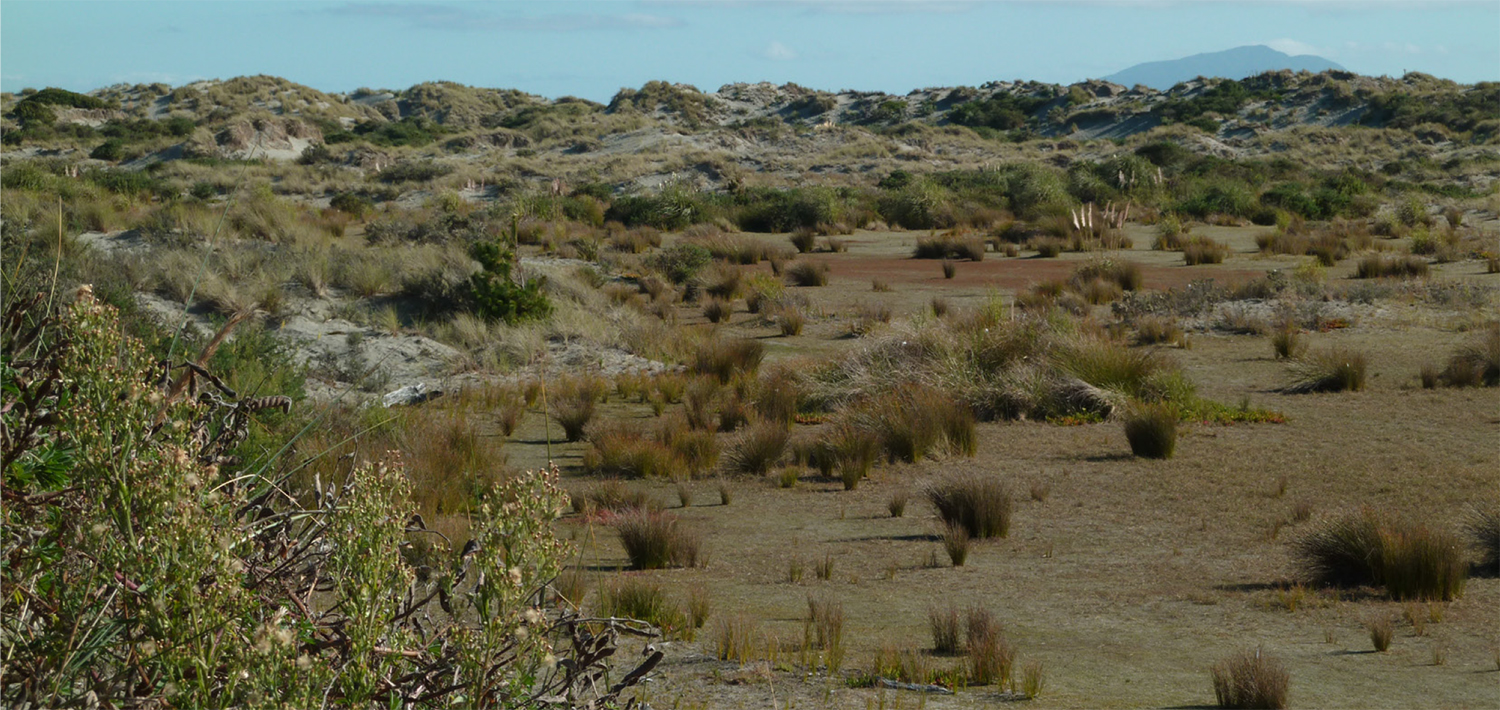
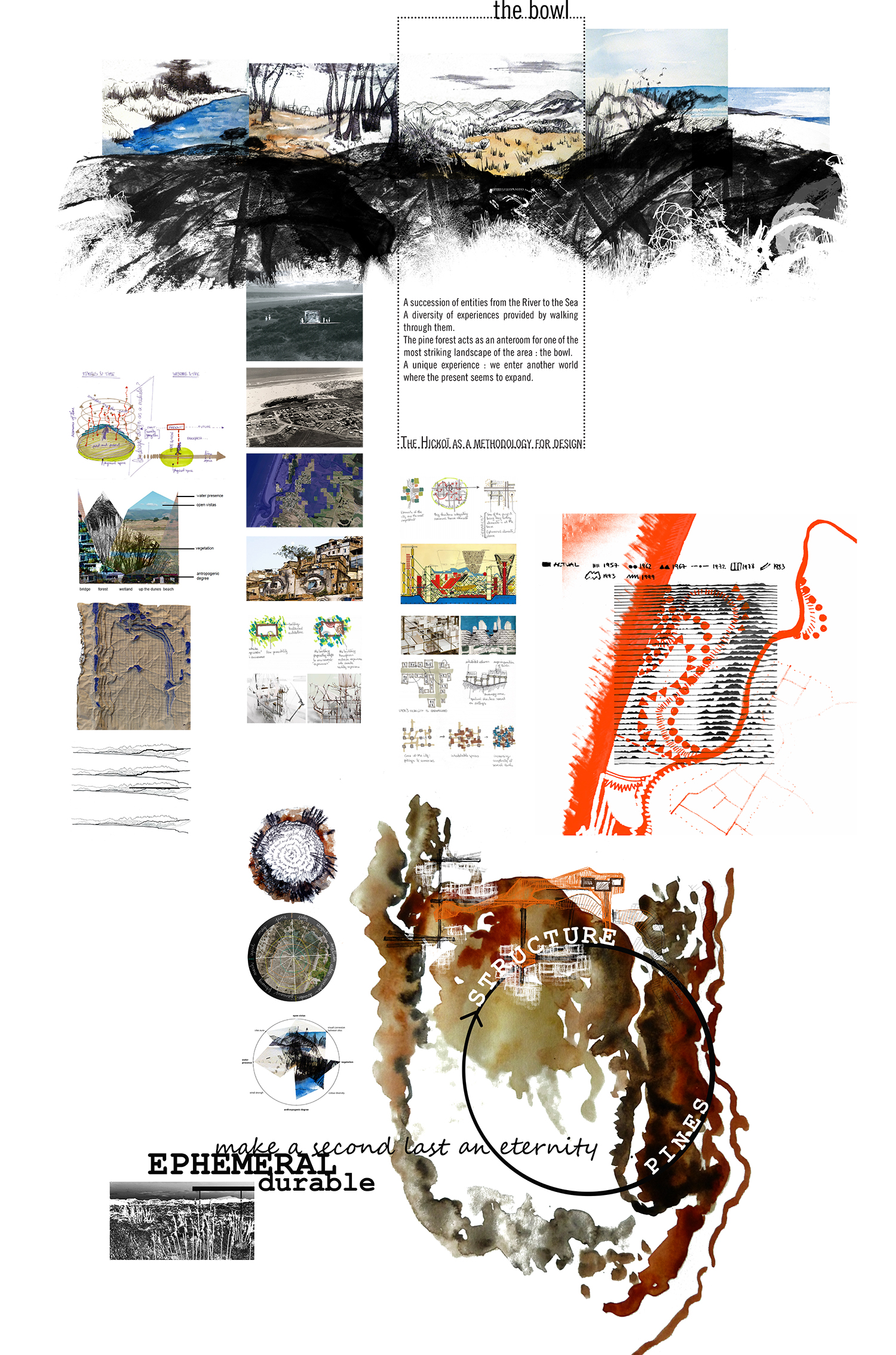
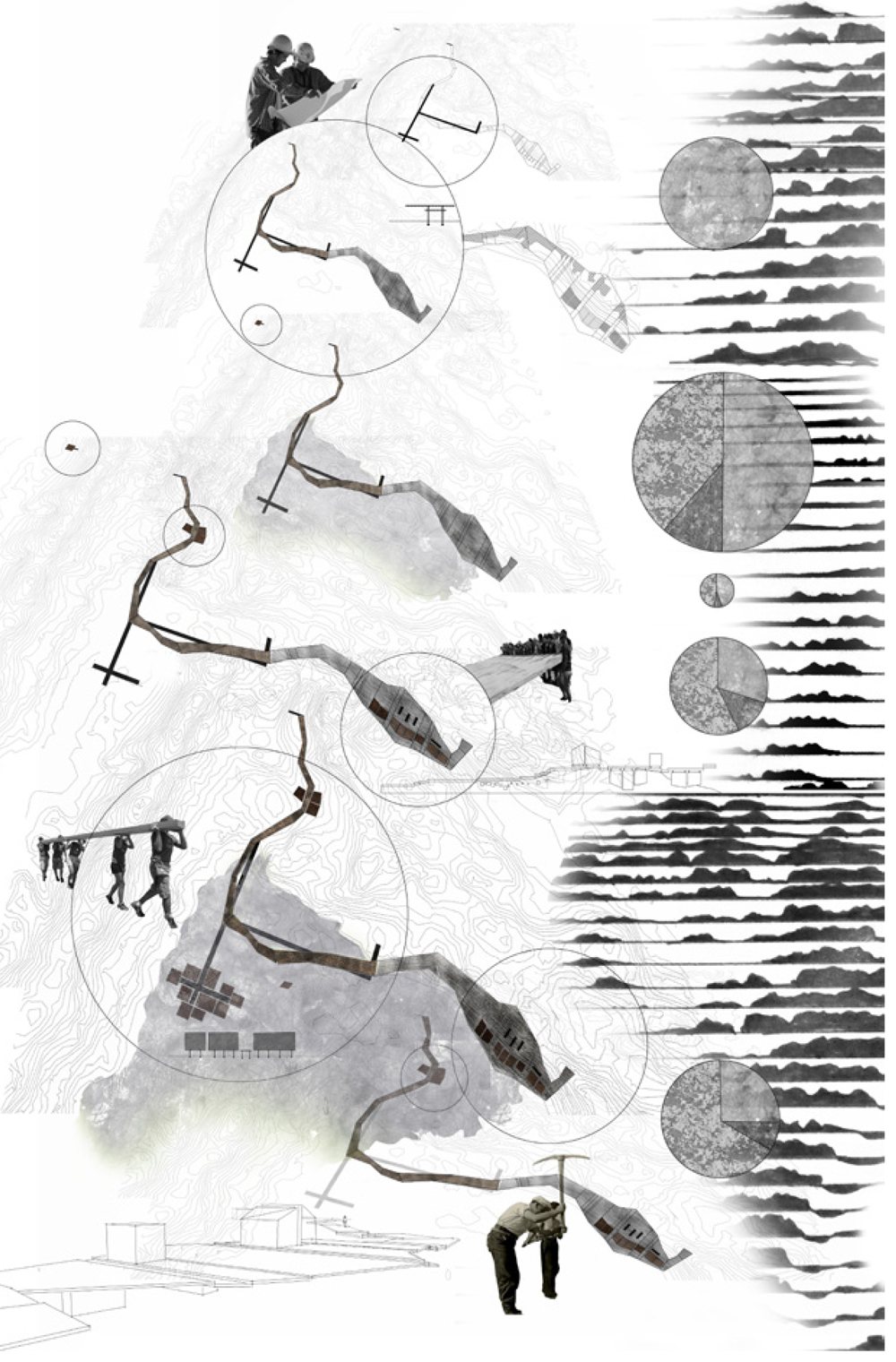
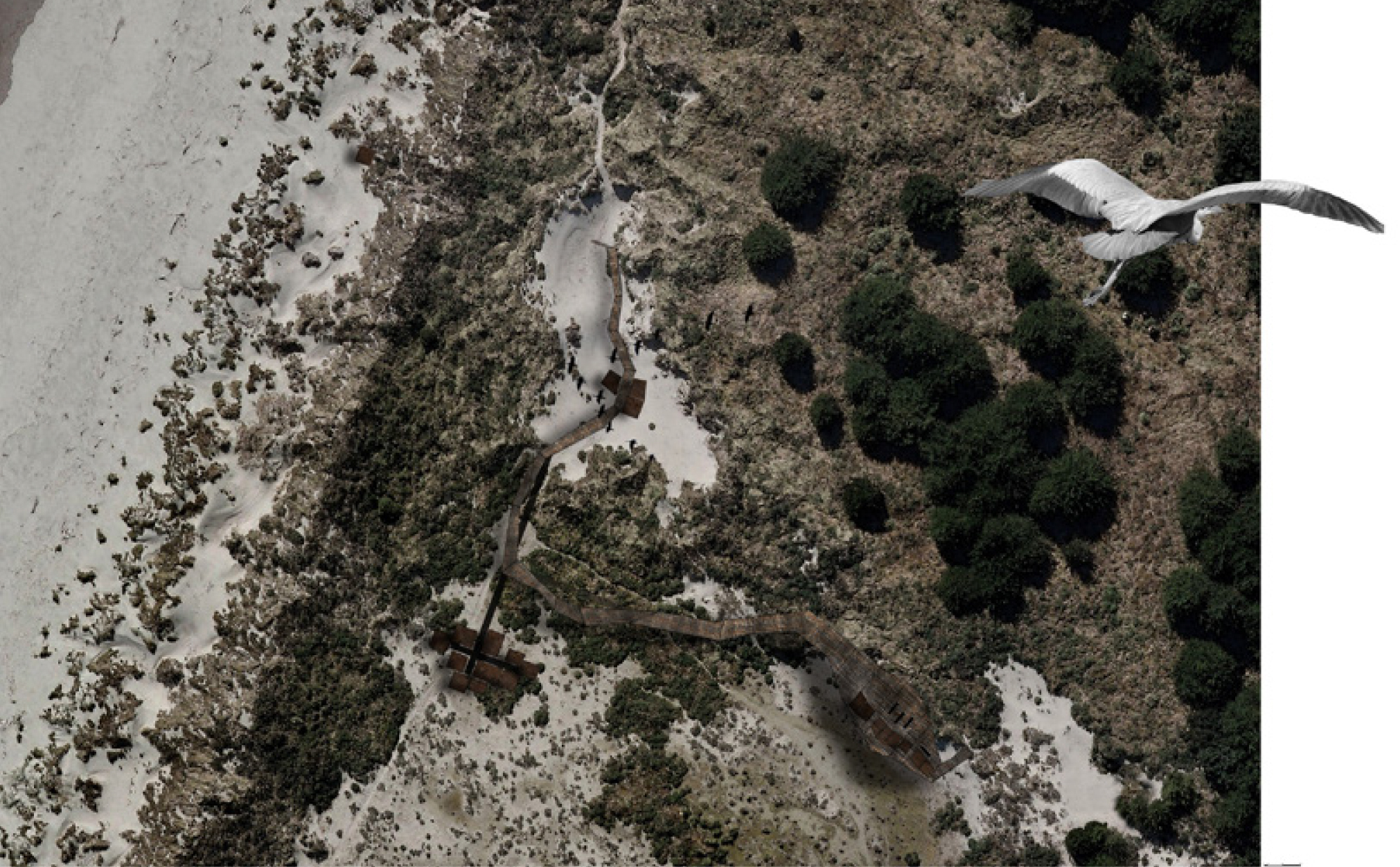
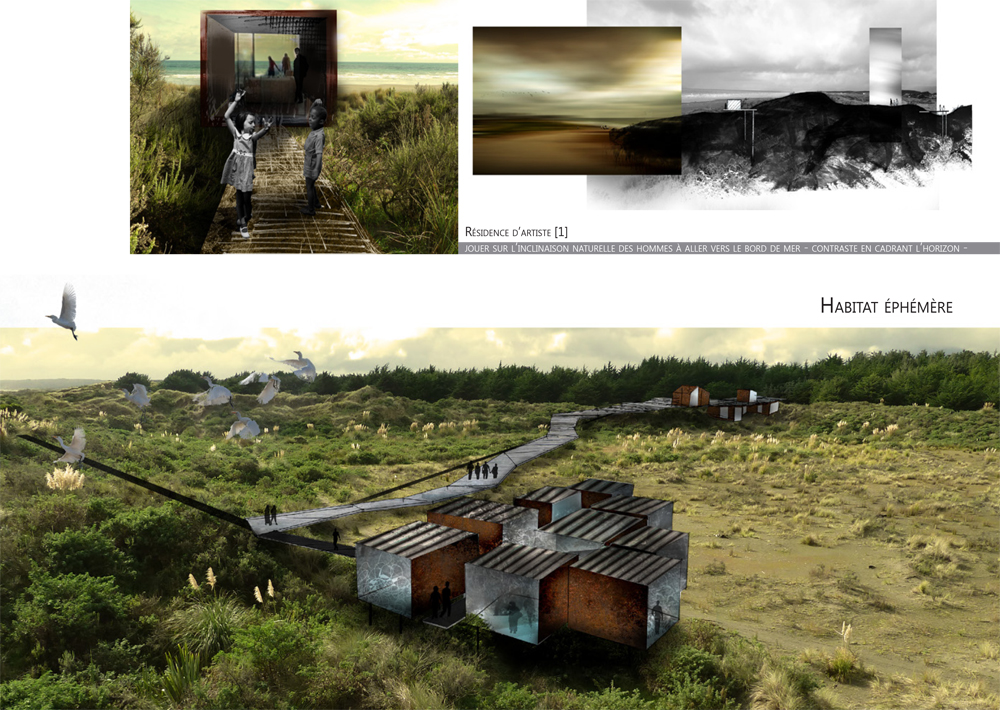
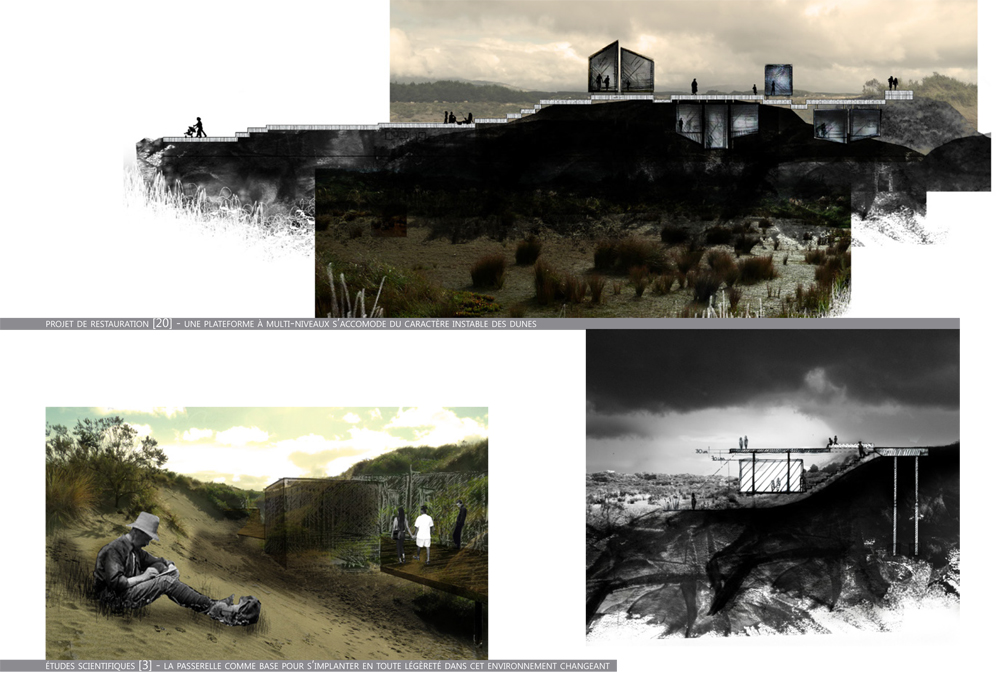
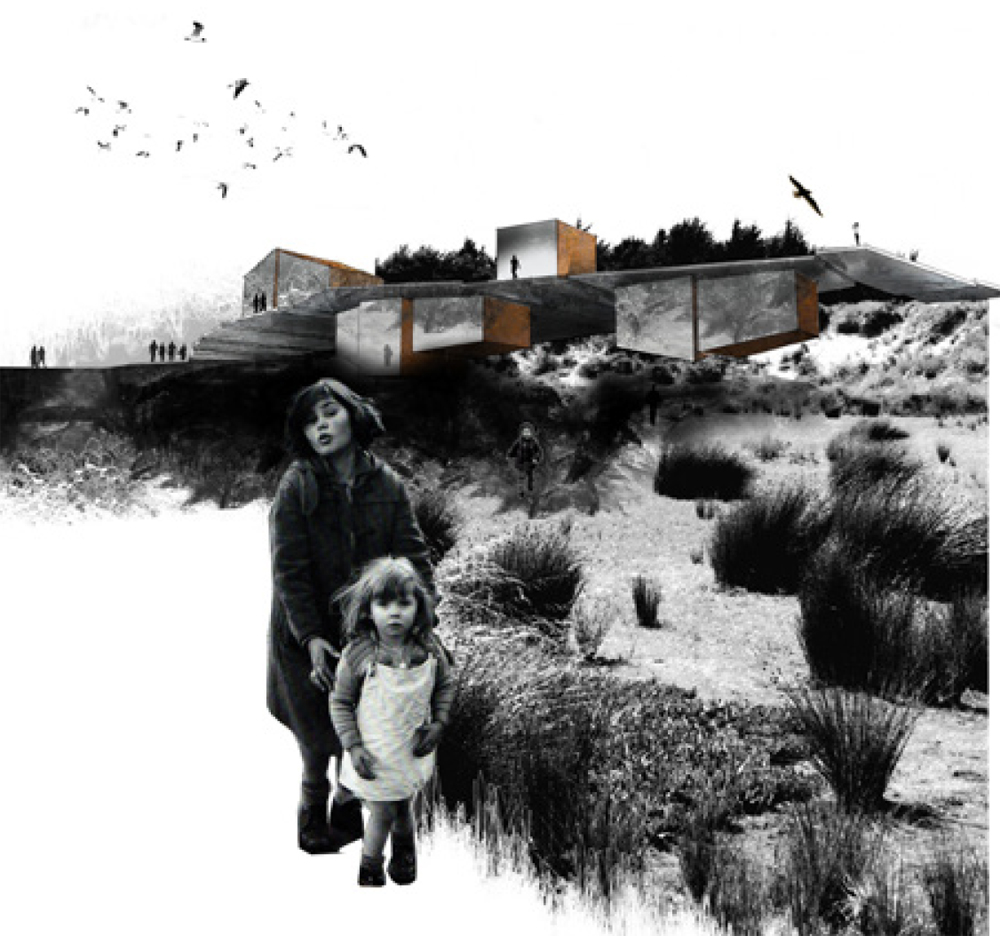
La civilisation occidentale a été construite au cours des siècles sur l’idée de développer un monde durable, prospère et éternel. Le type d’architecture et la façon dont nous nous installons dans le paysage sont une flagrante incarnation de cette idée. Est-il possible de changer notre esprit à ce sujet? Pouvons-nous imaginer un autre moyen d’habiter un monde en constante évolution, en créant des expériences nous aidant à être plus conscients de notre environnement, et ainsi mieux préparés à ces changements ?
Nous avons affaire à un site en constante évolution. Le cœur du projet est composé d’une structure en bois supportant une promenade courant sur le site et conduisant à un groupe de bâtiments communautaires éphémères. Ils seront reconstruits régulièrement en s’ajustant aux besoins de la population, créant une série d’incarnations d’architecture. Les utilisations et les formes de ces bâtiments peuvent changer au fil du temps, pour peut-être conduire à une occupation du site plus durable. Ces espaces ne sont pas seulement une base pour la communauté : le processus par lequel ils sont créés cimentent les relations et permet de transmettre des compétences en construction aux prochaines générations .
L’ensemble du projet évolue également sur une période de temps plus longue à travers un cycle vertueux d’utilisation de matériaux sur place.
The western civilisation has been built over centuries on the idea of developing a prosperous, durable, everlasting world. The character of the architecture and the way we settle in a landscape are a great expression of this idea. Is it possible to shift our mind about this? Can we imagine another way to settle in an ever-changing world, creating some experiences helping us to be more aware of our environment, and thus be more prepared to those changes?
We are dealing with an ever-changing site. The core of my project is composed by a wooden structure supporting a boardwalk which runs into the site and leads to a group of ephemeral community buildings. They will be rebuilt regularly, adjusting to people’s need, creating a series of incarnation of architecture. Then, later in time, a ritual of constructing more ephemeral buildings could take place. The uses and the shapes of these buildings may change over time, maybe leading to a more durable settlement. These places will be not only a base for the community to be : the process by which they are created cement relationships and pass on construction skills to the next generations.
